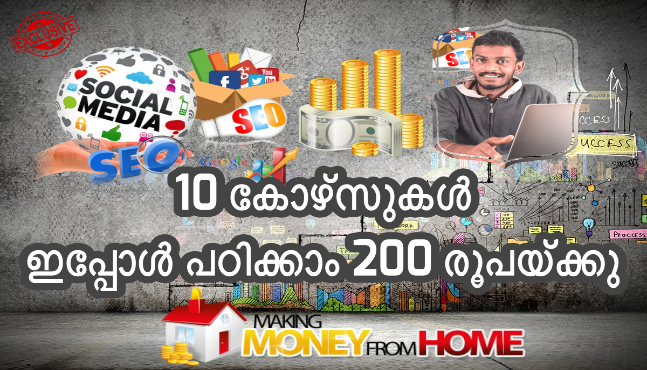Stop Wasting Ad Spend : In the fast-paced world of digital marketing, running ads has become a standard business practice. Whether it’s G, Meta, LinkedIn, paid advertising is often the quickest way to reach a target audience and generate measurable results. However, despite its popularity, most businesses are still losing a significant portion of their ad budgets. According to several marketing studies, between 25% and 40% of total ad spend is wasted on ineffective targeting, poor optimization, irrelevant clicks, and bad creative execution.
Table of Contents
As we move through 2025, advertising has become more complex — and more expensive. Algorithms change rapidly, competition for impressions is high, and customer attention spans are shorter than ever. Many brands are paying more for ads but seeing lower returns because they fail to understand how to strategically manage and optimize their campaigns.
If you’re frustrated by rising ad costs and declining performance, you’re not alone. The key to fixing this problem isn’t just cutting budgets; it’s spending smarter. This Comprehensive Guide explores in detail how to stop wasting ad spend, identifies the core mistakes that drain your marketing budget, and explains actionable strategies to help you maximize your return on investment (ROI) in 2025 and beyond.
Understanding the Concept of Ad Spend Waste

Ad spend waste refers to money spent on advertising that does not lead to meaningful outcomes such as sales, leads, or measurable engagement. It can result from poor targeting, bad creative design, or ineffective campaign tracking. The truth is, even the most sophisticated advertising platforms are only as smart as the strategies you use to guide them.
In 2025, digital advertising is data-driven. Platforms like G Ads and Meta Ads have built-in AI systems that help businesses automate bidding, targeting, and optimization. Yet, without clear human oversight, these tools can burn through budgets quickly. The problem is not the technology — it’s how marketers use it.
To reduce waste, you must align three core elements: data, creative, and strategy. Once these are optimized, every rupee or dollar spent works toward a clear marketing goal.
Also Read : Mastering Retargeting Ads in 2025 : A Complete Guide to Boosting Conversions
Top Reasons Why Businesses Waste Ad Spend
Let’s start by identifying the root causes. Understanding why waste occurs is the first step to preventing it.
1. Broad or Poor Targeting
One of the most common mistakes businesses make is targeting audiences that are too broad or irrelevant. When ads are shown to people who have no interest in your product or service, you end up paying for impressions and clicks that will never convert.
In 2025, with powerful data tools available, audience targeting should be highly specific. Brands that fail to refine their audiences will continue to waste money on generic traffic that delivers no ROI.
2. Weak Ad Creatives
No matter how well-targeted your ad is, a weak creative will fail to engage. Outdated visuals, vague copy, and unclear calls-to-action (CTAs) reduce click-through rates (CTR) and increase cost per conversion. In 2025’s competitive landscape, your creative must stand out instantly.
3. Lack of Conversion Tracking
Without proper conversion tracking, you have no way to know what’s working. Many advertisers waste money because they can’t measure the connection between ad clicks and actual business outcomes.
4. Ineffective Landing Pages
Even the best ad campaigns can collapse if the landing page fails to convert. A slow, cluttered, or irrelevant landing page increases bounce rates and wastes paid traffic.
5. Overreliance on Automation
Automation tools like Smart Bidding or Dynamic Ads are powerful, but relying on them entirely can backfire. These systems optimize based on existing data, so if your setup is weak, they’ll amplify inefficiencies instead of fixing them.
6. Chasing Vanity Metrics
Many marketers get caught up chasing clicks, impressions, and reach — metrics that look good on paper but don’t drive business growth. True success lies in conversions, retention, and ROI.
7. Lack of Regular Optimization
Digital ads aren’t “set it and forget it” campaigns. Without weekly optimization, poor-performing ads will continue draining your budget unchecked.
How to Stop Wasting Ad Spend in 2025: A Step-by-Step Strategy

Let’s break down a professional, data-driven strategy to stop wasting your advertising budget and start generating real, measurable results.
1. Start with Clear Campaign Objectives
Every successful advertising campaign begins with a clearly defined goal. Ask yourself:
- Do I want to increase sales or generate leads?
- Am I focusing on brand awareness or conversions?
- What action do I expect the user to take after seeing the ad?
Setting measurable goals like “generate 200 qualified leads in 30 days” or “achieve a 5x ROAS (Return on Ad Spend)” ensures every rupee is tied to performance outcomes.
Pro Tip: Avoid mixing multiple objectives in a single campaign. Create separate campaigns for awareness, engagement, and conversion to accurately measure effectiveness.
2. Refine and Segment Your Audience
Audience targeting is the foundation of ad performance. Instead of targeting everyone, focus on the most likely buyers.
Steps to improve audience targeting:
- Use first-party data from your CRM or website.
- Segment by demographics, interests, and purchase intent.
- Build lookalike audiences from existing customers.
- Use exclusion filters to remove irrelevant users.
- Implement retargeting campaigns for users who interacted but didn’t convert.
By narrowing your audience, your ad budget focuses on the highest-converting prospects — not random clicks.
3. Improve Ad Creatives and Messaging
Your ad creative is the hook. If your visual or copy doesn’t attract attention within seconds, you lose money.
Key elements of high-performing creatives:
- A compelling headline that solves a pain point.
- High-quality visuals or short-form videos optimized for each platform.
- A clear, benefit-oriented message.
- A strong CTA that tells users what to do next.
For example, instead of saying “Buy Our Software”, say “Save 10 Hours a Week with Our AI Tool.” This shifts focus from product features to customer benefits.
Pro Tip: Test multiple creative variations simultaneously. Run A/B tests to identify which ad designs and copy generate the best engagement and conversions.
4. Implement Accurate Conversion Tracking
Without conversion tracking, optimization is guesswork. Every click and impression should be measurable.
Set up tracking using:
- G Tag Manager (GTM) for event tracking.
- Meta Pixel for social ads.
- UTM parameters for campaign-level analytics in G Analytics 4 (GA4).
Measure key metrics like Cost per Acquisition (CPA), Return on Ad Spend (ROAS), and Conversion Rate (CVR).
This data will show which ads are generating profit and which ones are wasting money.
5. Conduct A/B Testing Regularly
Never assume one version of your ad is the best. A/B testing allows you to compare different versions of your ad creative, copy, landing page, and audience segments to identify what performs best.
What to test:
- Headlines
- Ad descriptions
- Visuals or video styles
- Call-to-action buttons
- Landing page structure
By making small adjustments and analyzing performance data, you can continuously reduce ad waste and boost conversions.
6. Optimize Landing Pages for Conversions
Your landing page is where users decide whether to take action. Even if your ad generates 1,000 clicks, you’ll lose them all if the landing page isn’t optimized.
Landing page optimization checklist:
- Fast loading time (under 3 seconds).
- Mobile-friendly and responsive design.
- Clear headline that matches your ad message.
- Strong visuals and trust elements (reviews, badges, guarantees).
- Prominent CTA buttons placed above the fold.
Pro Tip: Use tools like Hotjar or Crazy Egg to analyze user behavior on your landing page through heatmaps and session recordings.
Buy Now : Advanced YouTube Ads Master Class in Hindi
7. Leverage Negative Keywords in Search Ads
For G Ads, negative keywords are essential to avoid showing your ads for irrelevant searches.
Example:
If you’re advertising “Luxury Handbags,” exclude terms like “cheap,” “free,” or “wholesale.”
This prevents your ads from attracting unqualified traffic and ensures your budget is spent only on high-intent queries.
8. Utilize Retargeting to Recover Lost Traffic
Retargeting helps you reach users who’ve already interacted with your brand but didn’t convert.
Set up retargeting campaigns for:
- Website visitors who didn’t make a purchase.
- Cart abandoners.
- Video viewers or ad engagers.
Retargeted users are 70% more likely to convert than new visitors, making this one of the most efficient ways to reduce wasted ad spend.
9. Allocate Budget Based on Performance
Budget allocation should be data-driven. Avoid dividing budgets evenly across campaigns. Instead, invest more in high-performing campaigns and pause low-performing ones.
Monitor metrics like:
- Cost per Click (CPC)
- Cost per Acquisition (CPA)
- Click-Through Rate (CTR)
- Conversion Rate (CVR)
Reallocate funds weekly or biweekly based on performance trends.
10. Use AI Tools and Automation Wisely
AI can predict ad performance, personalize targeting, and improve bidding strategies — but only when guided by a human strategy.
Use automation for:
- Dynamic creative optimization (DCO).
- Predictive bidding.
- Automated audience segmentation.
Avoid over-automation. Always review results manually to ensure quality control and campaign alignment with business goals.
11. Analyze Ad Frequency and Combat Ad Fatigue
When the same ad appears too often, users start ignoring it, and performance declines — this is called ad fatigue.
To avoid this:
- Rotate creatives every 2–3 weeks.
- Limit frequency caps (e.g., no more than 3–4 impressions per user per week).
- Refresh ad copy and visuals regularly.
This keeps your campaigns fresh and engaging.
12. Focus on Customer Lifetime Value (CLV)
Don’t just focus on one-time conversions. If you know your average customer spends ₹10,000 over a lifetime, you can confidently spend ₹1,000 to acquire them.
Measuring Customer Lifetime Value (CLV) allows you to justify ad costs and optimize for long-term profitability rather than short-term metrics.
13. Track Multi-Channel Attribution
In 2025, users interact with multiple touchpoints before converting — a FB ad, a G search, a YT video, or an email.
Use multi-touch attribution models in GA4 or advanced CRMs to understand which platforms contribute most to conversions. This prevents over-crediting one channel and underfunding another.
14. Avoid Common Ad Spend Mistakes
Here are quick reminders of what not to do:
- Don’t run ads without a proper funnel strategy.
- Don’t ignore remarketing.
- Don’t forget to exclude converted users.
- Don’t rely on vanity metrics.
- Don’t skip testing and optimization cycles.
Every rupee counts — treat each campaign as an investment, not an experiment.
Future of Ad Spend Optimization in 2025 and Beyond

The future of advertising is intelligent, automated, and data-centric. Here’s how optimization will evolve:
- AI Predictive Insights: Platforms will predict audience behavior with advanced machine learning.
- Voice and AR Advertising: New ad formats will emerge as consumer technology evolves.
- Privacy-First Marketing: With tighter data regulations, brands will rely more on consent-based, first-party data.
- Hyper-Personalization: Ads will become more individualized using AI-driven audience segmentation.
- Performance Automation: Platforms will increasingly manage bidding and placements autonomously.
To stay ahead, brands must combine human creativity with AI efficiency.
Conclusion
In 2025, stopping ad waste isn’t about spending less — it’s about spending wisely. The digital advertising landscape is filled with opportunities, but only for businesses that plan, test, analyze, and adapt continuously.
If you want to eliminate waste, start by setting clear goals, refining your audience, crafting better creatives, optimizing your landing pages, and leveraging data. When you take a disciplined, data-driven approach to ad management, every rupee spent becomes an investment — not an expense.
Great advertising doesn’t come from big budgets; it comes from strategic execution. The brands that master this will dominate 2025 and beyond.
Disclaimer
This article is for educational purposes only and not financial or marketing advice. Please do your own research before making any advertising decisions.
Keywords : Stop Wasting Ad Spend – Stop Wasting Ad Spend in 2025 – Stop Wasting Ad Spend.







